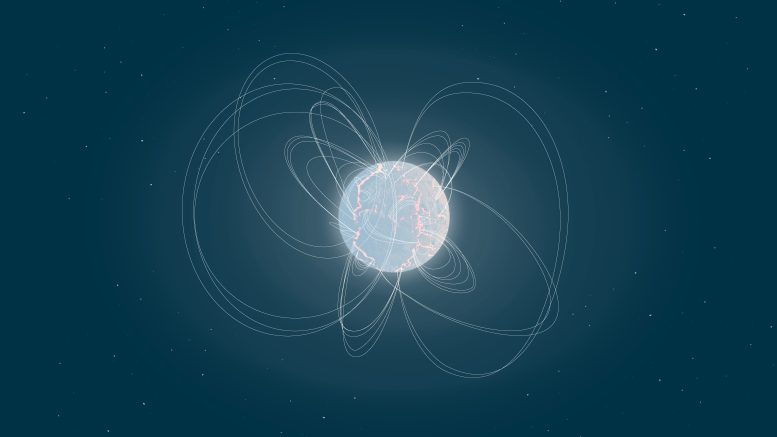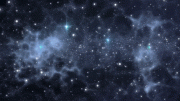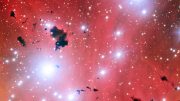
ESA’s satellites, INTEGRAL and XMM-Newton, detected and followed up on a gamma-ray burst from the nearby galaxy M82, which was identified as a flare from a magnetar—a rare type of highly magnetic neutron star. This event, captured and analyzed by an international team led by the University of Geneva, marks the first confirmed magnetar flare outside the Milky Way, furthering our understanding of these powerful cosmic phenomena. Artist’s impression of a magnetar. Magnetars are the cosmic objects with the strongest magnetic fields ever measured in the Universe. Credit: ESA
An international team, with the assistance of ESA satellites, and including researchers from UNIGE, has detected a massive eruption emanating from a magnetar, an extremely magnetic neutron star.
As ESA’s satellite INTEGRAL scanned the skies, it detected a surge of gamma-rays emanating from the nearby galaxy M82. Shortly after this observation, ESA’s XMM-Newton X-ray space telescope sought any residual glow from the event but detected nothing. An international research group, with contributors from the University of Geneva (UNIGE), concluded that the burst was an extragalactic flare from a magnetar, a young neutron star known for its intense magnetic field. This finding was documented in the journal Nature.
On 15 November 2023, ESA’s satellite INTEGRAL spotted a sudden explosion from a rare object. For only a tenth of a second, a short burst of energetic gamma-rays appeared in the sky. “The satellite data were received in the INTEGRAL Science Data Centre (ISDC), based on the Ecogia site of the UNIGE Astronomy Department, from where a gamma-ray burst alert was sent out to astronomers worldwide, only 13 seconds after its detection,” explains Carlo Ferrigno, senior research associate in the Astronomy Department at UNIGE Faculty of Science, PI of the ISDC and co-author of the publication. The IBAS (Integral Burst Alert System) software gave an automatic localization coinciding with the galaxy M82, 12 million light-years away. This alert system was developed and is operated by scientists and engineers from the UNIGE in collaboration with international colleagues.
A curious signal from a nearby galaxy
“We immediately realized that this was a special alert. Gamma-ray bursts come from far away and anywhere in the sky, but this burst came from a bright nearby galaxy,” explains Sandro Mereghetti of the National Institute for Astrophysics (INAF–IASF) in Milan, Italy, lead author of the publication and contributor of IBAS. The team immediately requested ESA’s XMM-Newton space telescope to perform a follow-up observation of the burst’s location as soon as possible. If this had been a short gamma-ray burst, caused by two colliding neutron stars, the collision would have created gravitational waves and have an afterglow in X-rays and visible light.
However, XMM-Newton’s observations only showed the hot gas and stars in the galaxy. Using ground-based optical telescopes, including the Italian Telescopio Nazionale Galileo and the French Observatoire de Haute-Provence, they also looked for a signal in visible light, starting only a few hours after the explosion, but again did not find anything. With no signal in X-rays and visible light, and no gravitational waves measured by detectors on Earth (LIGO/VIRGO/KAGRA), the most certain explanation is that the signal came from a magnetar.
Magnetars: mega-magnetic stars, recently dead
“When stars more massive than eight times the Sun die, they explode in a supernova that leaves a black hole or neutron star behind. Neutron stars are very compact stellar remnants with more than the mass of the Sun packed into a sphere with the size of the Canton of Geneva. They rotate quickly and have strong magnetic fields.” explains Volodymyr Savchenko, senior research associate in the Astronomy Department at UNIGE Faculty of Science, and co-author of the publication. Some young neutron stars have extra strong magnetic fields, more than 10,000 times that of typical neutron stars. These are called magnetars. They emit energy away in flares, and occasionally these flares are gigantic.
However, in the past 50 years of gamma-ray observations, only three giant flares have been identified as coming from magnetars in our galaxy. These outbursts are very strong: one that was detected in December 2004, came from 30,000 light-years from us but was still powerful enough to affect the upper layers of Earth’s atmosphere, like the Solar flares, coming from much closer to us, do.
The flare detected by INTEGRAL is the first firm confirmation of a magnetar flare outside of the Milky Way. M82 is a bright galaxy where star formation takes place. In these regions, massive stars are born, live short turbulent lives, and leave behind a neutron star. “The discovery of a magnetar in this region confirms that magnetars are likely young neutron stars,” adds Volodymyr Savchenko. The search for more magnetars will continue in other extra-galactic star-forming regions, to understand these extraordinary astronomical objects. If astronomers can find many more, they can start to understand how often these flares happen and how neutron stars lose energy in the process.
INTEGRAL, a key instrument in a race against time
Outbursts of such short duration can only be captured serendipitously when an observatory is already pointing in the right direction. This makes INTEGRAL with its large field of view, more than 3000 times greater than the sky area covered by the Moon, so important for these detections.
Carlo Ferrigno explains: “Our automatic data processing system is highly reliable and enables us to alert the community immediately.” When unexpected observations like this are picked up, INTEGRAL and XMM-Newton can be flexible in their schedules, which is essential in time-crucial discoveries. In this case, had the observations been performed even just a day later, there would not have been such strong proof that this was indeed a magnetar and not a gamma-ray burst.
Reference: “A magnetar giant flare in the nearby starburst galaxy M82” by Sandro Mereghetti, Michela Rigoselli, Ruben Salvaterra, Dominik Patryk Pacholski, James Craig Rodi, Diego Gotz, Edoardo Arrigoni, Paolo D’Avanzo, Christophe Adami, Angela Bazzano, Enrico Bozzo, Riccardo Brivio, Sergio Campana, Enrico Cappellaro, Jerome Chenevez, Fiore De Luise, Lorenzo Ducci, Paolo Esposito, Carlo Ferrigno, Matteo Ferro, Gian Luca Israel, Emeric Le Floc’h, Antonio Martin-Carrillo, Francesca Onori, Nanda Rea, Andrea Reguitti, Volodymyr Savchenko, Damya Souami, Leonardo Tartaglia, William Thuillot, Andrea Tiengo, Lina Tomasella, Martin Topinka, Damien Turpin and Pietro Ubertini, 24 April 2024, Nature.
DOI: 10.1038/s41586-024-07285-4









Be the first to comment on "ESA Satellites Detect Mysterious Gamma-Ray Burst in Nearby Galaxy"